

On Sunday, October 8th, 2023, I ran the Boulderthon marathon in beautiful Boulder, Colorado!
While I had a great experience overall, I ran into some nutrition-related issues during my race. As a sports nutritionist, I couldn’t help but dive down the rabbit hole post-race, examining my nutrition plan in more detail to figure out what went awry.
This blog details several nutrition lessons I learned in the Boulderthon marathon. I hope you find the blog helpful as you plan your nutrition strategy for your next race!
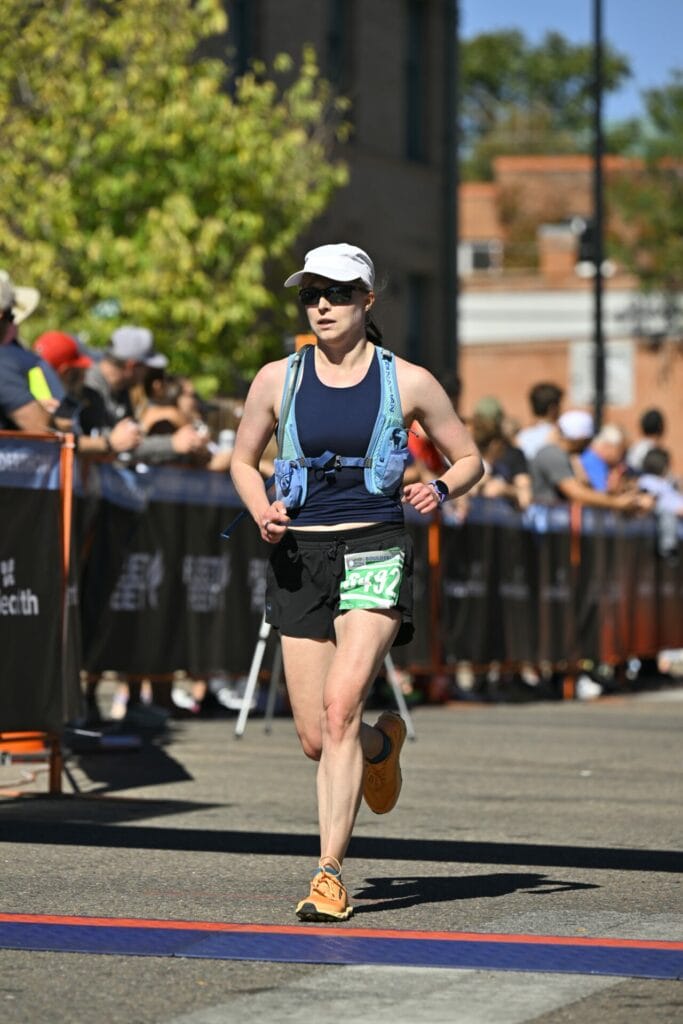
Here are 3 key principles of marathon race day nutrition that I learned in the Boulderthon marathon!
The morning of the marathon, I woke up at 4:45 a.m. to have adequate time to make and drink coffee, eat breakfast, and use the bathroom before hitting the road for the one-hour drive from my house to Boulder for the race. This means I ate breakfast around 5 a.m.; the marathon began at 7:30 a.m., two and a half hours later.
Typically, I recommend that my runner clients eat their pre-race meal 2-3 hours before their race begins. I followed my own guideline to a T! However, I slipped up and forgot to top off with fuel in the 15-30 minutes before my race. Here’s what happened:
Once I arrived in downtown Boulder and began migrating with the crowd of runners toward the start line, I was so excited to begin the race that I forgot to consume another 20-30 grams of carbohydrates in the 15-30 minutes before the race started.
This strategy can be helpful if you ate your pre-race meal 2-3 hours ago and want to ensure adequate fuel availability at the start of your race. This slip-up affected my energy level during the race; it’s a marathon race day nutrition mistake I won’t make again!
You can read more about pre-race nutrition strategies in my blog, 5 Simple Pre-Race Nutrition and Hydration Strategies for Trail Runners (the content is also applicable to road runners).
One significant area for improvement in this marathon was that I didn’t practice consuming the foods I planned to eat during my race in race-pace training sessions. While I had practiced my nutrition plan more than a few times on lower-intensity long runs, those runs were at a much slower pace than I planned to run during the marathon.
Engaging in endurance exercise at high intensities, such as running a marathon, initiates “splanchnic hypoperfusion.” This is fancy scientific lingo for “reduced blood flow to the gut.” (Source)
What I suspect happened during the marathon is that a lot of blood was diverted from my gut to my muscles to support my race pace for hours, something I hadn’t experienced during training. This may have reduced my digestive system’s ability to assimilate the gels I consumed, resulting in a very uncomfortable, full sensation in my stomach.
When I train for my next marathon, I will practice my race nutrition strategy in workouts at higher intensities to ensure I can digest the foods I intend to consume during the race.
Most energy gels consist of simple sugars – the most basic forms of sugar. Simple sugars are either monosaccharides, which contain one sugar molecule, or disaccharides, which contain two sugar molecules. Simple sugars frequently found in energy gels include glucose, fructose, sucrose, and dextrose.
When we consume these types of sugars (even from whole-food energy gels that contain sugars like maple syrup or blackstrap molasses), we create a high-osmolality environment in the gut. “Osmolality” refers to the concentration of a solution (such as a mixture of sugar and water).
A high osmolality solution is highly concentrated. When you consume sugary gels with water (most gels provide instructions for how much water you should drink alongside the gel), you can end up with a high-osmolality environment in your gut. This can negatively impact digestion and cause gastrointestinal distress.
During my race, I consumed a brand of natural energy gels that I suspect created a high-osmolality environment in my gut. I had practiced consuming these gels during training and tolerated them fine, but (as described in the section above) I think the higher speeds I was running at during the marathon also compromised my digestion, making it even harder for me to tolerate the sugary (albeit containing natural sugar) gels.
I plan to use UCAN Edge more during training for my next marathon. UCAN Edge is a special type of energy gel with a low osmolality in the gut and delivers a more steady energy supply compared to most simple sugar-based gels on the market.
Running the Boulderthon marathon was a transformative experience, and I can’t wait to run more marathons down the road! The race tested my physical limits and taught me several invaluable nutrition lessons.
Fueling for a marathon takes practice. I look forward to taking the nutrition lessons I’ve learned and putting them into practice during my training and future marathons.
I take all my nutrition lessons and put them to good use, helping my mountain athlete clients! If you are a mountain runner (trail runner, road runner, or both) enthusiastic about optimizing your nutrition so you can feel and run your best, I’d love to help! Schedule a free discovery call to learn how I can help you up-level your nutrition for optimal running performance.
Would you like a super convenient, easy-to-read, PDF version of this comprehensive blog? Grab your PDF copy of Marathon Race Day Nutrition: 3 Nutrition Lessons Learned In The Boulderthon Marathon!
The content provided on this nutrition blog is intended for informational and educational purposes only. It is not a substitute for professional medical advice, diagnosis, or treatment. Always seek the advice of your physician or other qualified health provider with any questions you may have regarding a medical condition. Never disregard professional medical advice or delay seeking it because of something you have read on this blog.
The information and recommendations presented here are based on general nutrition principles and may not be suitable for everyone. Individual dietary needs and health concerns vary, and what works for one person may not be appropriate for another.
I make every effort to provide accurate and up-to-date information, but the field of nutrition is constantly evolving, and new research may impact dietary recommendations. Therefore, I cannot guarantee the accuracy or completeness of the information presented on this blog.
If you have specific dietary or health concerns, please consult a qualified nutritionist or another healthcare professional for personalized guidance.
I empower others through nutrition to conquer their mountain adventures, drawing from my own experiences.
With a background in Biomedical Science and an M.S. in Human Nutrition, I’m a Certified Nutrition Specialist and Licensed Dietitian Nutritionist. My journey in functional medicine has equipped me to work alongside athletes and tackle complex health cases. As a passionate trail runner, backcountry skier, and backpacker, I strive to support others on their paths to peak performance and well-being.


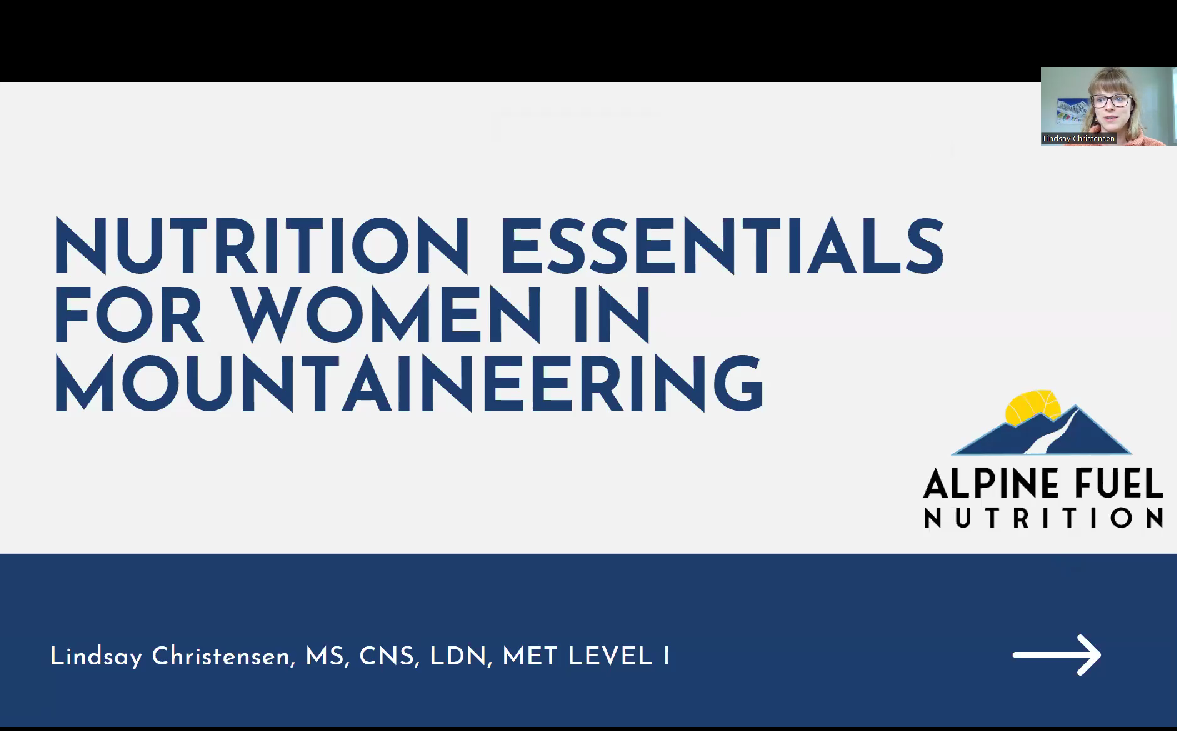

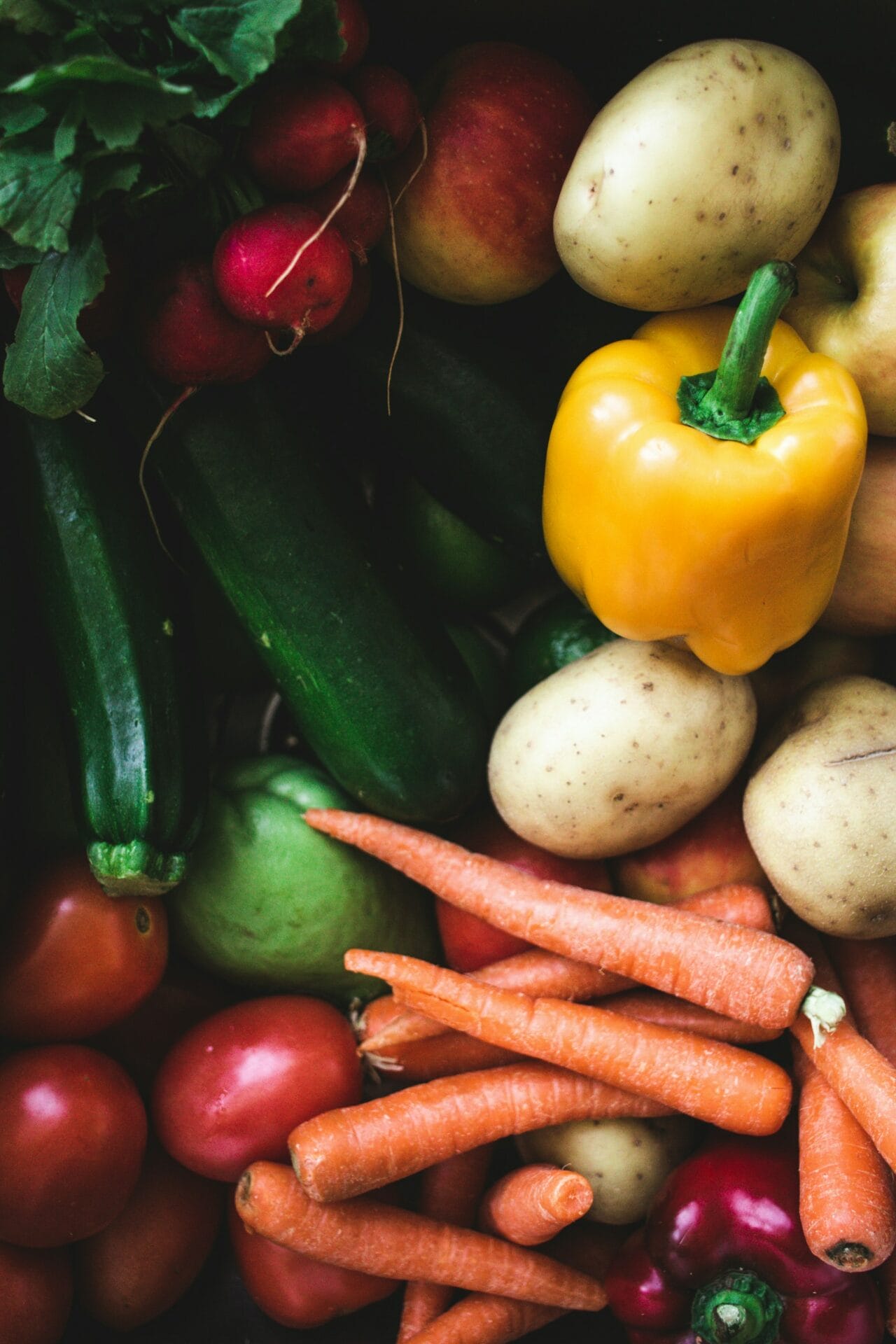


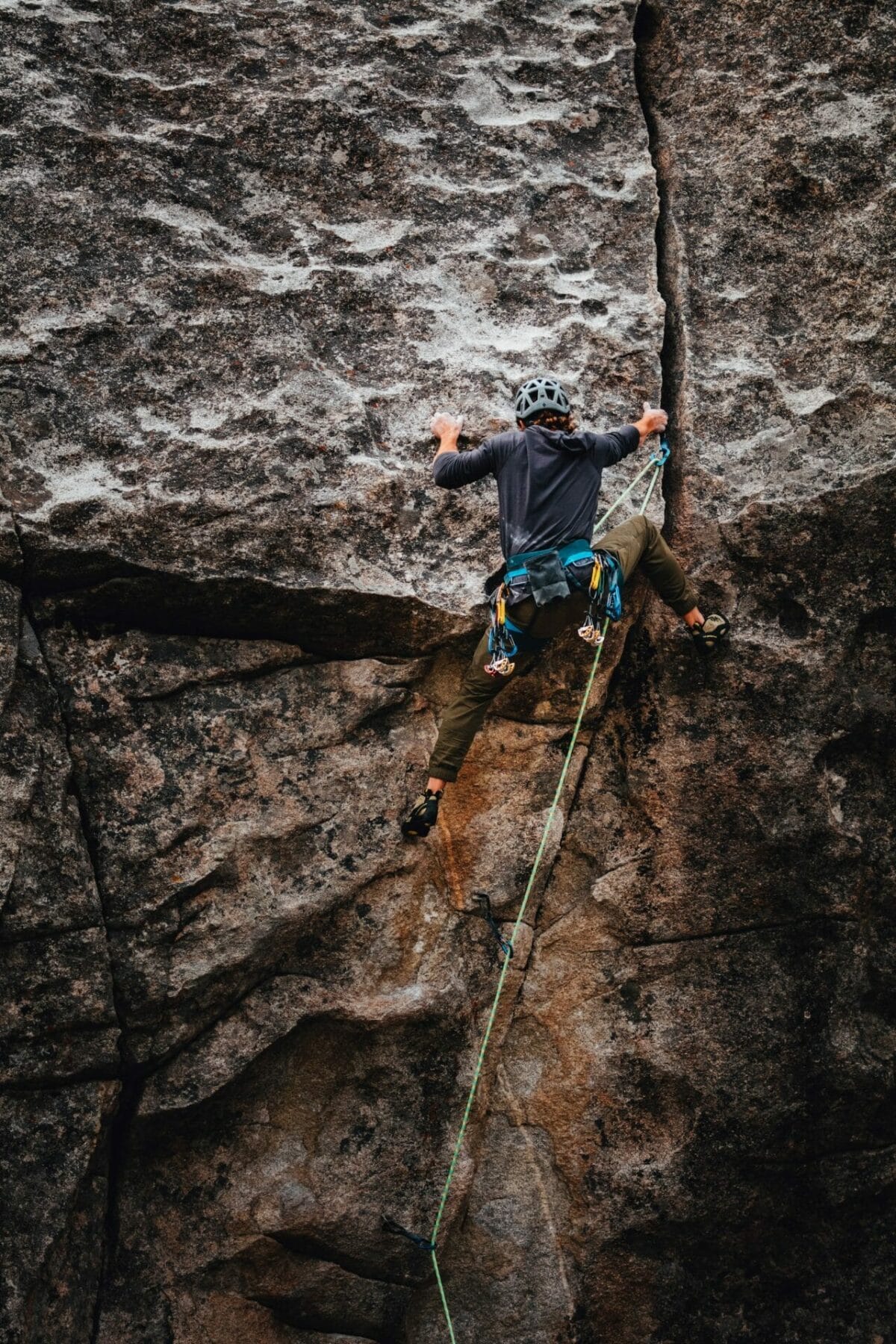
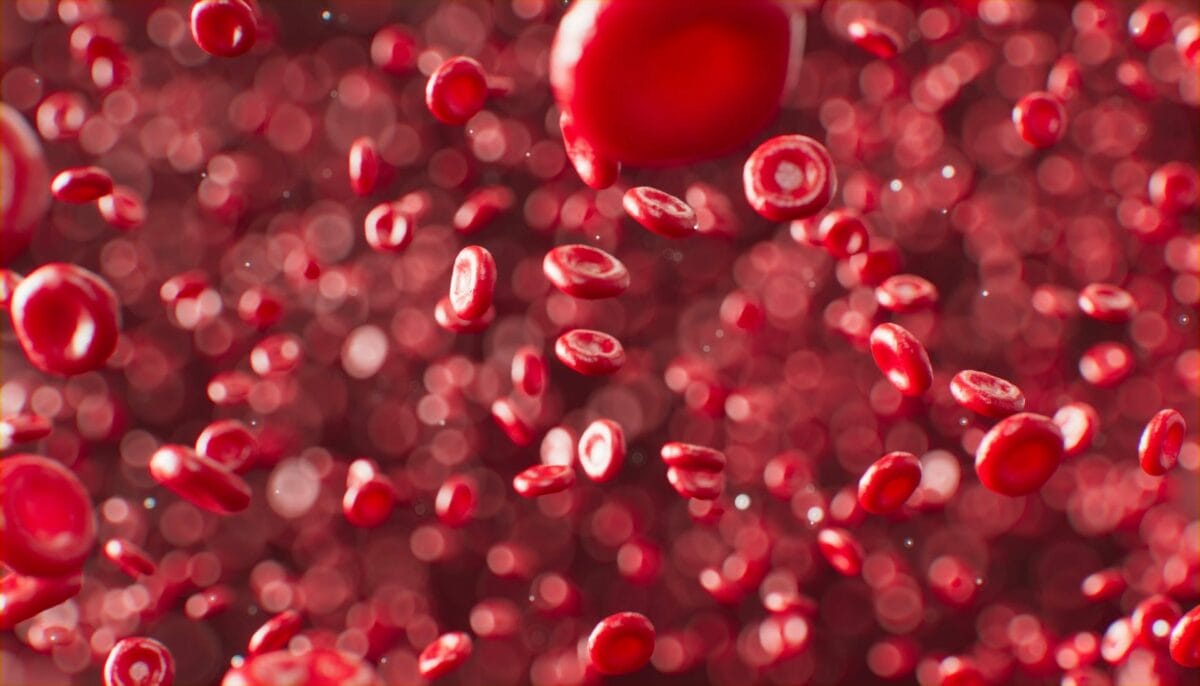
Sign up for updates that come right to your inbox.